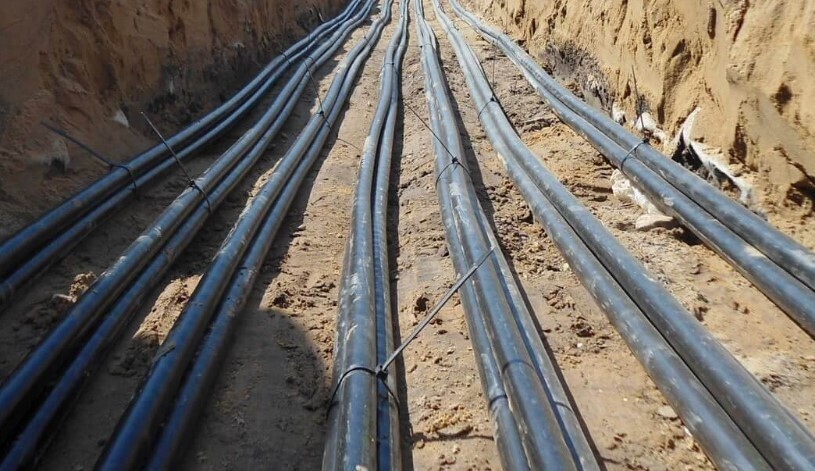Unseen but Essential: The Technology Behind Underground Cable Locators
Introduction
In today's interconnected world, where technology powers almost every aspect of our lives, the invisible infrastructure beneath our feet plays a crucial role. Hidden beneath the ground lies a complex network of cables and utilities that keep our cities running smoothly. Whether it's electricity, telecommunications, or water pipelines, these underground assets are essential to modern life. But how do we ensure that these buried utilities remain safe and undisturbed during construction or maintenance projects? Enter the world of underground cable locators—an indispensable tool in modern utility management.
The Importance of Cable Locators in Underground Infrastructure
When you think about underground utilities, it's easy to overlook the potential hazards they pose if accidentally damaged. Striking a hidden cable during excavation can lead to severe consequences, including power outages, service disruptions, and costly repairs. This is where the Top Cable Locator Underground technology becomes indispensable. This specialized tool allows professionals to accurately detect and map out the location of buried cables, pipes, and other utilities, ensuring that digging or drilling operations can be conducted safely.

How Cable Locators Work
Underground cable locators use a combination of technologies to detect buried utilities. The most common method involves transmitting a signal through the cable or pipe, which the locator device then picks up. By analyzing the signal's strength and direction, the device can pinpoint the exact location and depth of the buried utility. Some advanced cable locators also use electromagnetic fields or ground-penetrating radar to provide even more accurate results.
There are two primary types of cable locators: passive and active. Passive locators detect signals naturally emitted by the cables, such as those from electrical currents or radio frequencies. On the other hand, active locators require a signal to be transmitted along the utility, which the device then detects. Both types have their advantages, depending on the specific requirements of the job.
Applications of Underground Cable Locators
Underground cable locators are used in various industries, from construction to telecommunications. In construction, they are essential for ensuring that excavation projects do not inadvertently damage buried utilities. This is especially important in urban areas where multiple utilities are often located close to each other. In the telecommunications industry, cable locators are used to map out existing networks and plan new installations, ensuring that cables are laid out efficiently and without interference.
Another critical application of cable locators is in emergency response situations. When a utility line is accidentally damaged, quickly locating the exact point of failure is crucial to restoring services as soon as possible. Cable locators enable rapid detection and minimize the disruption caused by utility outages.
Benefits of Using Cable Locators
The benefits of using cable locators for underground utilities are numerous. First and foremost, they enhance safety by preventing accidental damage to buried cables. This reduces the risk of injury to workers and minimizes the chances of service disruptions. Additionally, using cable locators can significantly cut down on project costs. Avoiding damage to underground utilities means avoiding expensive repairs and delays, keeping projects on schedule and within budget.
Moreover, cable locators contribute to better planning and efficiency in infrastructure projects. By accurately mapping out underground utilities, project managers can make informed decisions about where and how to dig, ensuring that resources are used effectively. This is particularly important in large-scale projects where the complexity of underground networks can pose significant challenges.
Choosing the Right Cable Locator
Not all cable locators are created equal, and choosing the right one for the job is essential. Factors to consider include the type of utility being located, the depth at which it is buried, and the environmental conditions. For instance, some locators are better suited for detecting metallic pipes, while others are designed for non-metallic utilities like plastic or fiber-optic cables.
It's also important to consider the ease of use and accuracy of the device. Modern cable locators often come with advanced features like digital displays, GPS integration, and data logging capabilities, which can enhance the accuracy and efficiency of the locating process. Investing in a high-quality cable locator can save time and money in the long run, making it a worthwhile investment for any organization involved in underground utility management.
Conclusion
In an era where our reliance on technology and infrastructure continues to grow, the importance of protecting our underground assets cannot be overstated. Underground cable locators play a vital role in ensuring the safety and efficiency of construction, maintenance, and emergency response operations. By accurately detecting and mapping out buried utilities, these devices help prevent costly damage and service disruptions, ultimately contributing to the smooth functioning of our modern world.
Whether you're involved in construction, telecommunications, or utility management, understanding the importance of cable locator underground technology is essential. As our cities continue to expand and evolve, the need for reliable and accurate underground utility detection will only increase, making cable locators an indispensable tool in the ongoing effort to protect and maintain our critical infrastructure.
If you're seeking a dependable Underground Protection Mesh Exporter in Gujarat, consider those with a strong reputation for timely delivery and premium product quality. Gujarat-based exporters offer durable mesh designed to safeguard pipelines, fiber optic cables, and electrical lines from damage. Their products meet global safety standards and are suitable for a wide range of climates and terrains. Trust local exporters who understand the challenges of underground utility protection and offer innovative, cost-effective solutions.
ReplyDelete